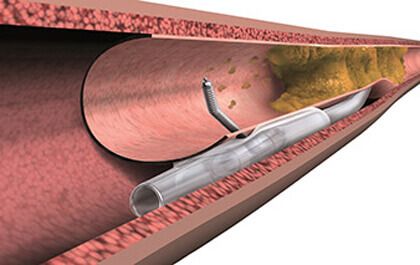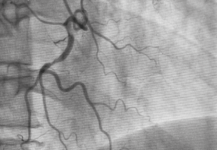In recent years, there has been an increase in the number of percutaneous coronary interventions (PCI) performed to treat chronic total occlusion (CTO). This increase is due to the availability of more advanced technology and greater experience of both operators and specialized centers. However, it is important to note that this technique is not free…
Coronary Angioplasty in Chronic Total Occlusions (CTO): Are There Sex Differences?
Studies and registries assessing sex differences in chronic total occlusions (CTO) are limited and women are under-represented, accounting for only 14%-21% of included patients. Even though success rate is comparable between sexes, several studies have shown higher complications rate among women. The aim of this study was to identify sex related baseline and procedural differences,…
CTO: Length’s Impact on Success
The rise of chronic total occlusions (CTO) percutaneous coronary interventions (PCI) goes hand in hand with technological development, through still posing a great challenge, one not exactly exempt from complications. An important criterion to successful CTO PCI is length: ≥20 mm lesions lower the odds, according to J-CTO Score. However, increasing operator experience and the…
One Year Prognosis of Atherosclerotic vs. Non-Atherosclerotic Lesions in MINOCA Patients
The use of intravascular imaging helps improve diagnosis in situations where a conventional coronary angiography might not be conclusive. That is the case of patients with myocardial infarction with non-obstructive coronary artery lesions (MINOCA). The largest MINOCA cohort reported so far has shown 5%-7% prevalence. This pathology, initially considered benign, presents a remote mortality rate…
Primary vs Secondary Retrograde Approach in CTO: Differences
Successful chronic total occlusion procedures are on the rise, especially in high volume centers, seeing as they count on more sophisticated materials and different techniques, such the retrograde approach. However, the significant increase of success rate with this technique has also brought along an increase in associated complications. The aim of this study was to…
The Best of SOLACI-SOCIME 2022 Main Arena – Chronic Total Occlusions (CTO)
How to Choose the Best Approach in Chronic Total Occlusions, by Dr. Jean-Michel Paradis CTO are present in around 16 to 20% of patients with coronary artery disease who get a coronary angiography. CTO Percutaneous intervention has been on the rise, mainly due to equipment and technique advancement. During his presentation, Dr. Paradis mentioned the…
CTO: Trials vs. Real-World
Percutaneous coronary intervention of chronic total occlusions (CTO) is currently indicated for symptom improvement, as studies have inadequate randomization of data which hinders the assessment of hard outcomes. However, patient inclusion in randomized controlled trials has been challenging, especially for highly symptomatic and higher risk patients. This causes a selection bias in randomized studies on…
Progress-CTO Score: A Key New Tool to Plan CTO
Intervention of chronic total occlusions (CTO) through angioplasty (PCI) can cause complications, even in highly experienced centers. Plenty has been written on the probability of success for the treatment of CTOs using scores such as CL-SCORE, J-CTO, ORA, E-CTO, CASTLE-CTO, etc. (some of which are usually used when preparing these cases). However, besides estimating success…
Changes in Coronary Collateral Function Post CTO Intervention
In the last few years, we have seen significant growth of chronic total occlusion (CTO) percutaneous intervention, which has also been considered for patients with viable territory that remain symptomatic. Experienced centers present successful CTO intervention rates close to 90%, especially with a hybrid approach. However, it is still a complex procedure, and target vessel…
EuroPCR 2022 | The IMPROVED-CTO Trial
PCI success rate in chronic total occlusion (CTO), according to some registries, is below 80%. These failed revascularization procedures might lead to quality-of-life deterioration and shorter survival. This concern has driven the development of new techniques and technologies in an attempt to increase PCI success. Today, approximately 20% of CTOs are treated with a second…
Transfemoral vs Transradial Approach in the Percutaneous Treatment of CTO
Percutaneous treatment of chronic total occlusion (CTO) has traditionally been via the transfemoral approach (TFA). The use of the transradial approach (TRA) in complex coronary interventions has been increasing. A randomized study assessed the use of TRA vs TFA in complex PCI (58% CTO) and TRA saw favorable outcomes. The aim of this prospective, randomized,…









